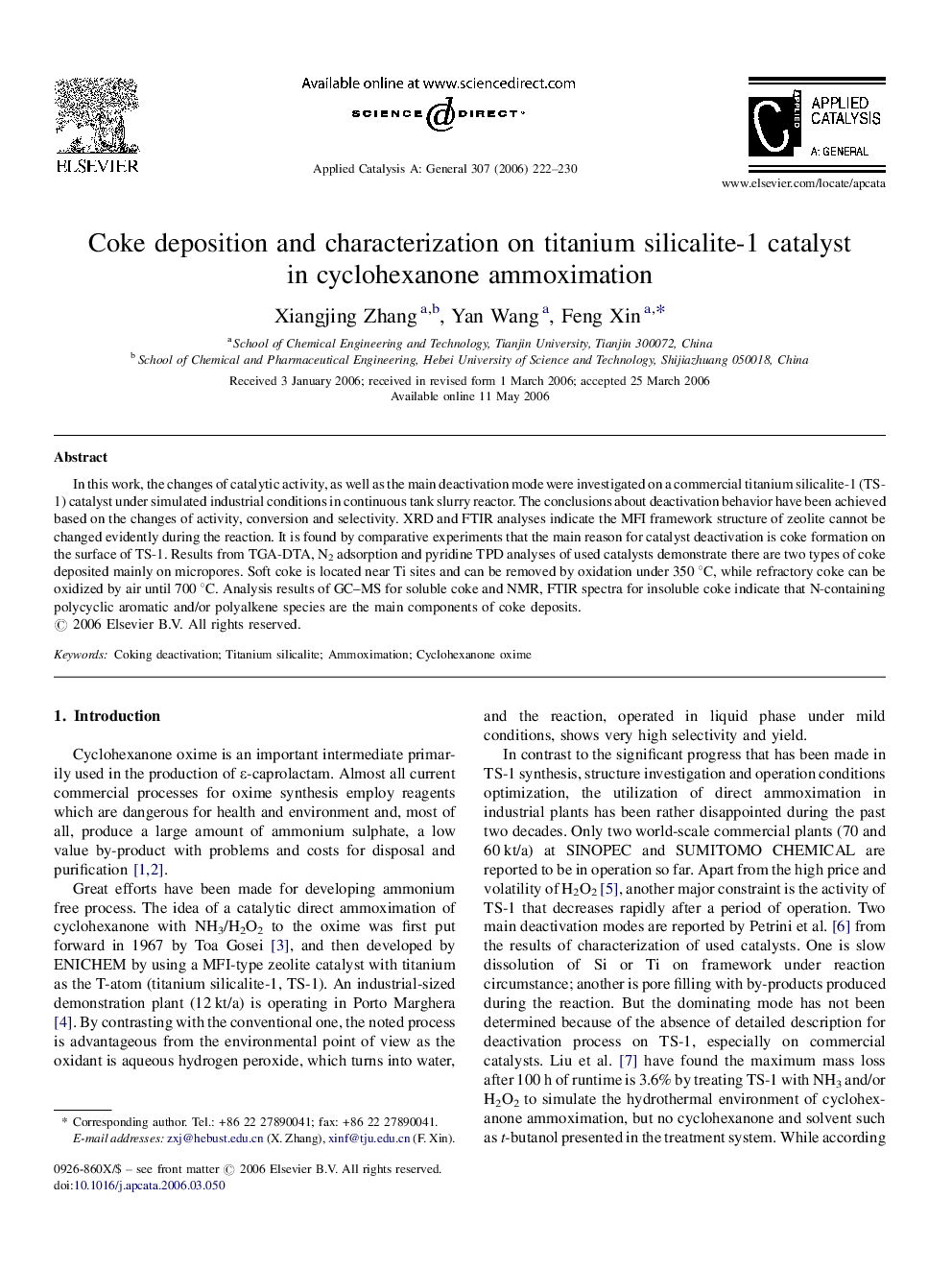| Article ID | Journal | Published Year | Pages | File Type |
|---|---|---|---|---|
| 44360 | Applied Catalysis A: General | 2006 | 9 Pages |
In this work, the changes of catalytic activity, as well as the main deactivation mode were investigated on a commercial titanium silicalite-1 (TS-1) catalyst under simulated industrial conditions in continuous tank slurry reactor. The conclusions about deactivation behavior have been achieved based on the changes of activity, conversion and selectivity. XRD and FTIR analyses indicate the MFI framework structure of zeolite cannot be changed evidently during the reaction. It is found by comparative experiments that the main reason for catalyst deactivation is coke formation on the surface of TS-1. Results from TGA-DTA, N2 adsorption and pyridine TPD analyses of used catalysts demonstrate there are two types of coke deposited mainly on micropores. Soft coke is located near Ti sites and can be removed by oxidation under 350 °C, while refractory coke can be oxidized by air until 700 °C. Analysis results of GC–MS for soluble coke and NMR, FTIR spectra for insoluble coke indicate that N-containing polycyclic aromatic and/or polyalkene species are the main components of coke deposits.
